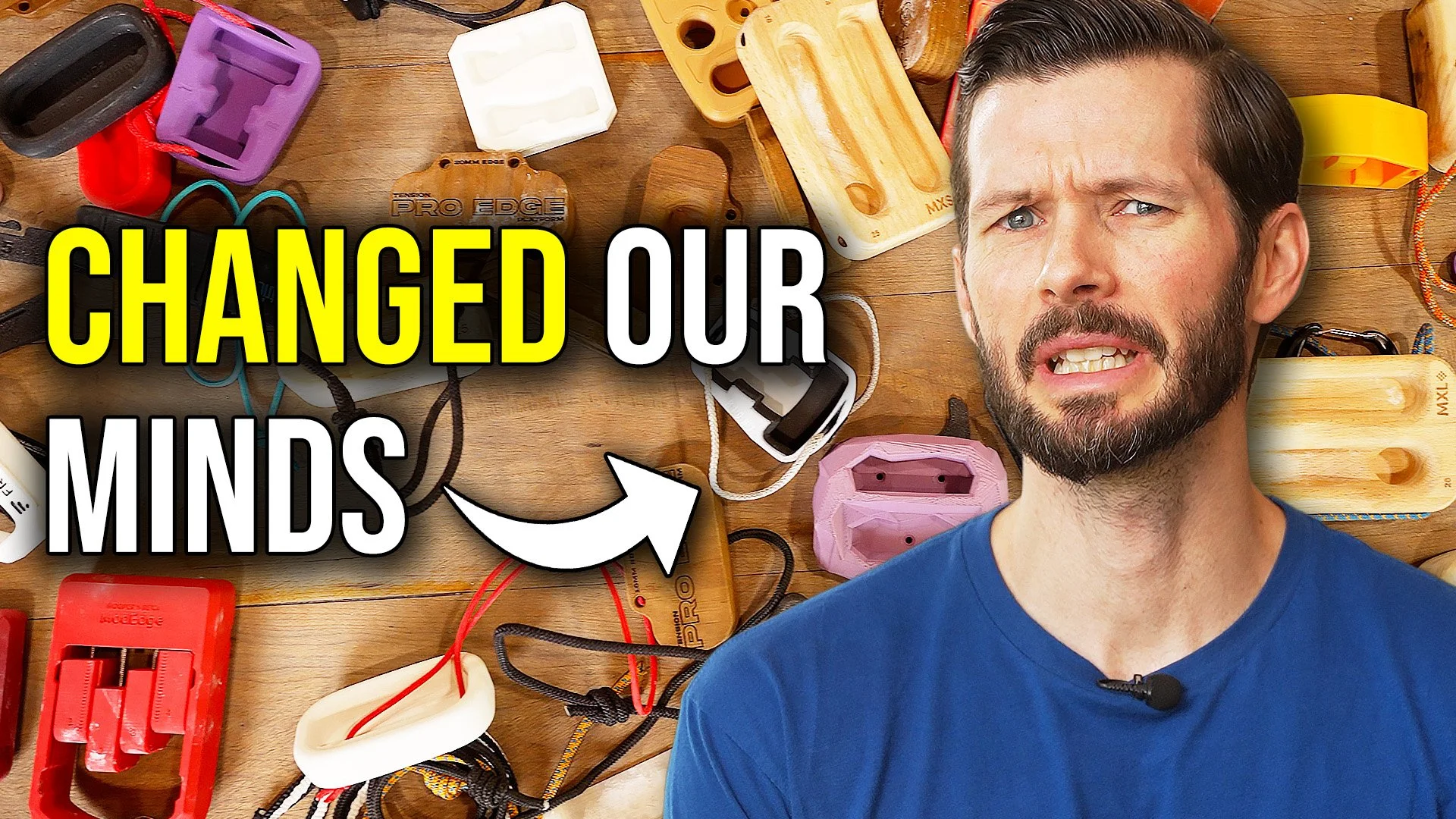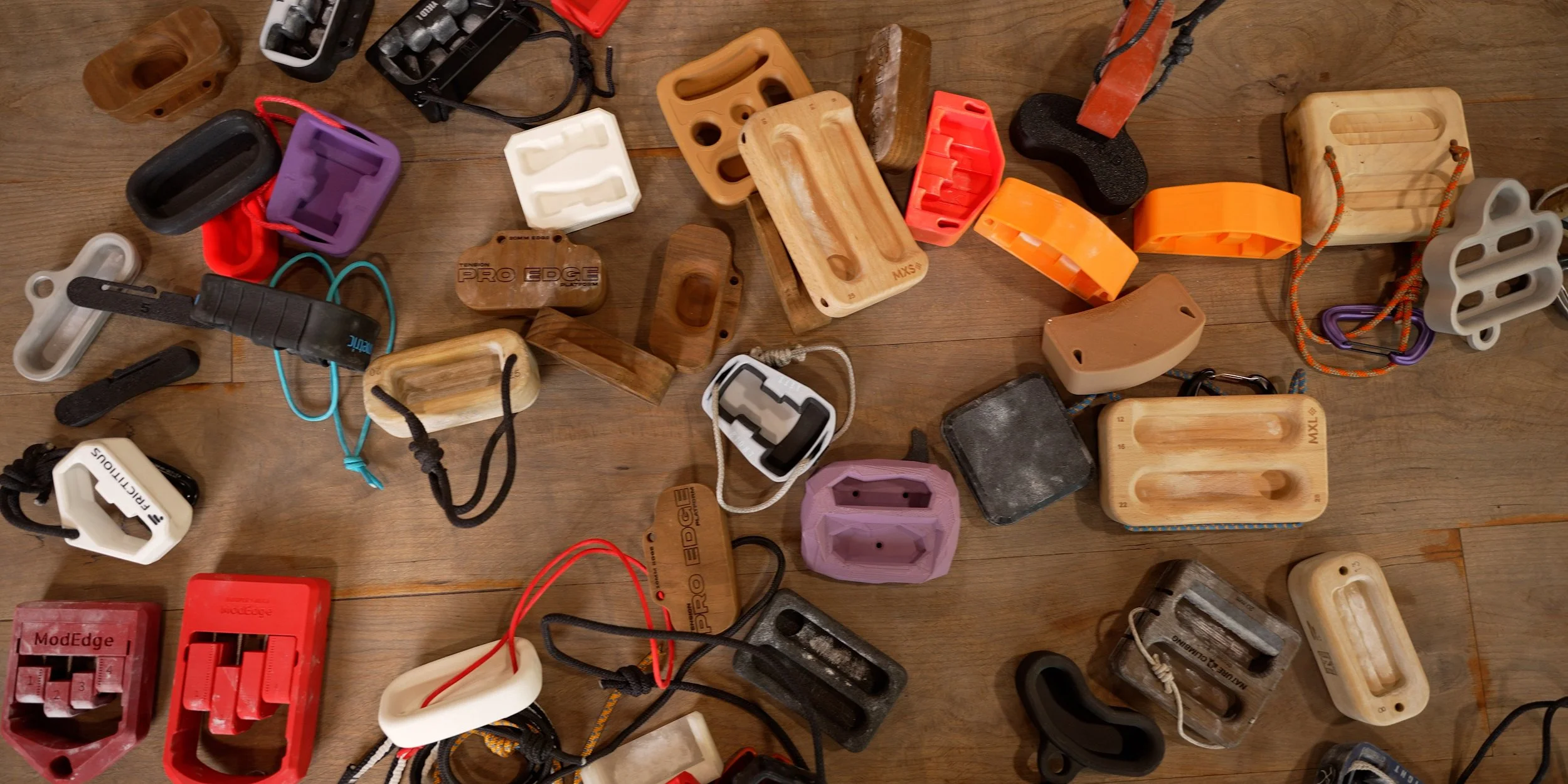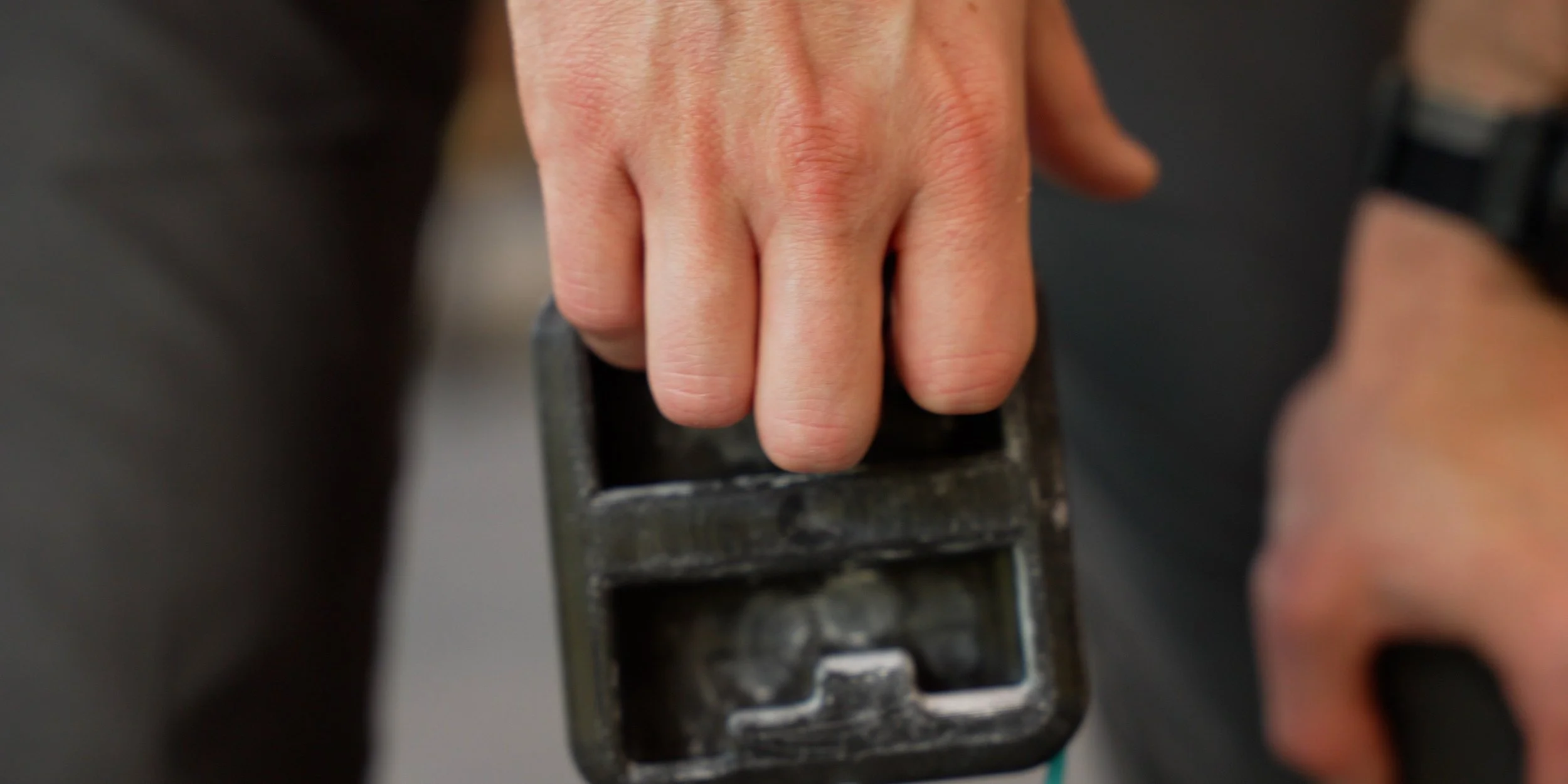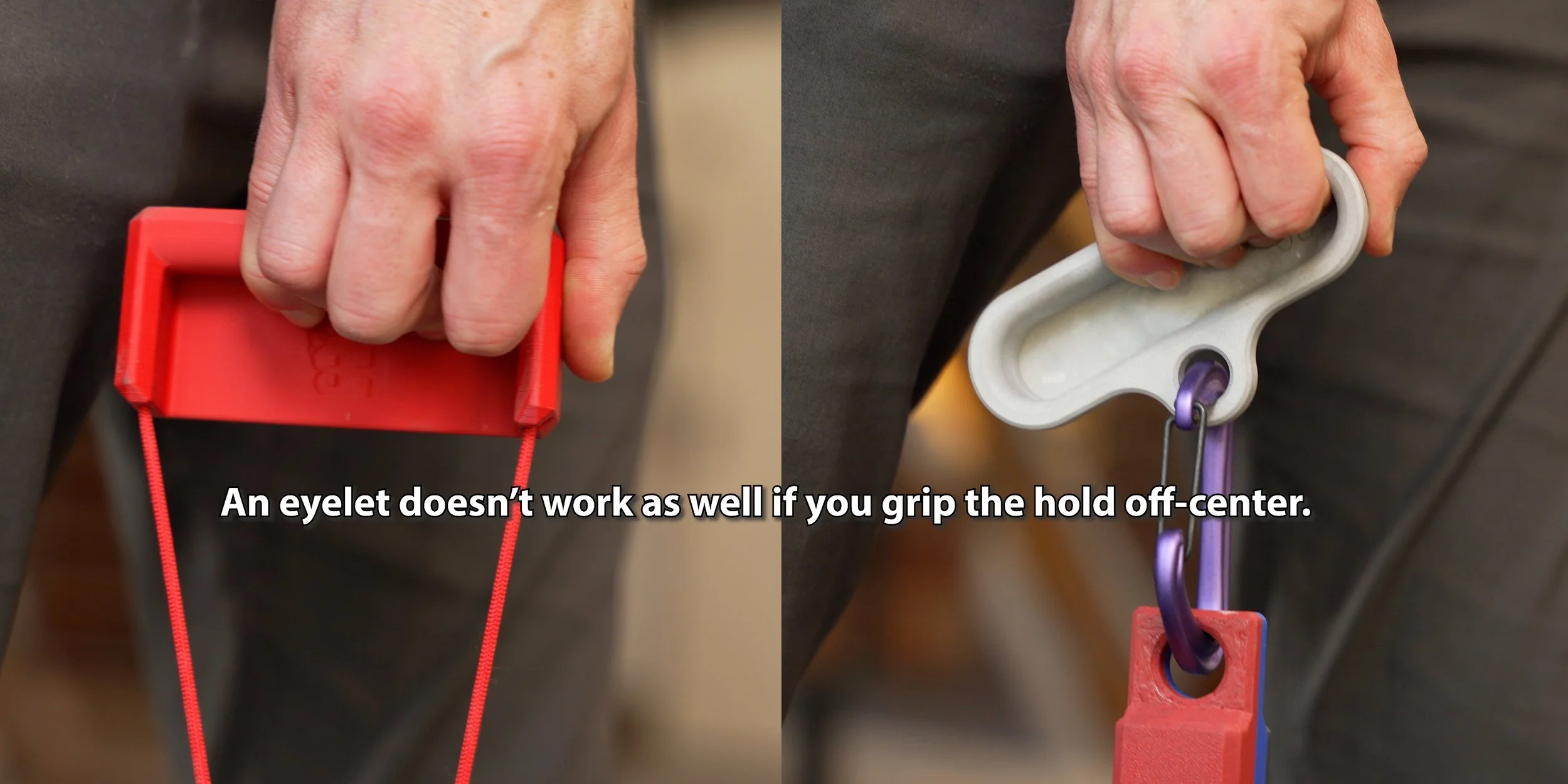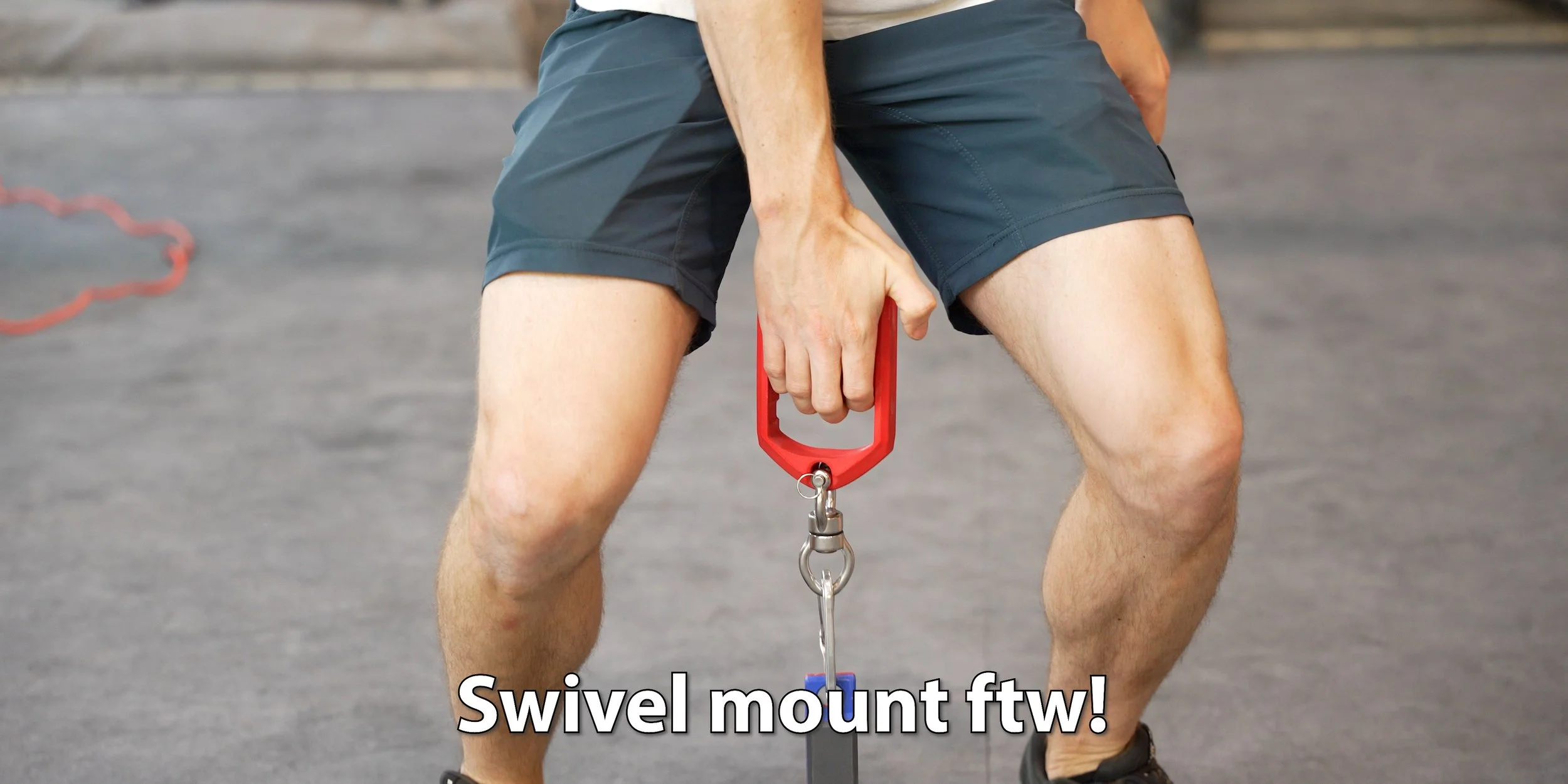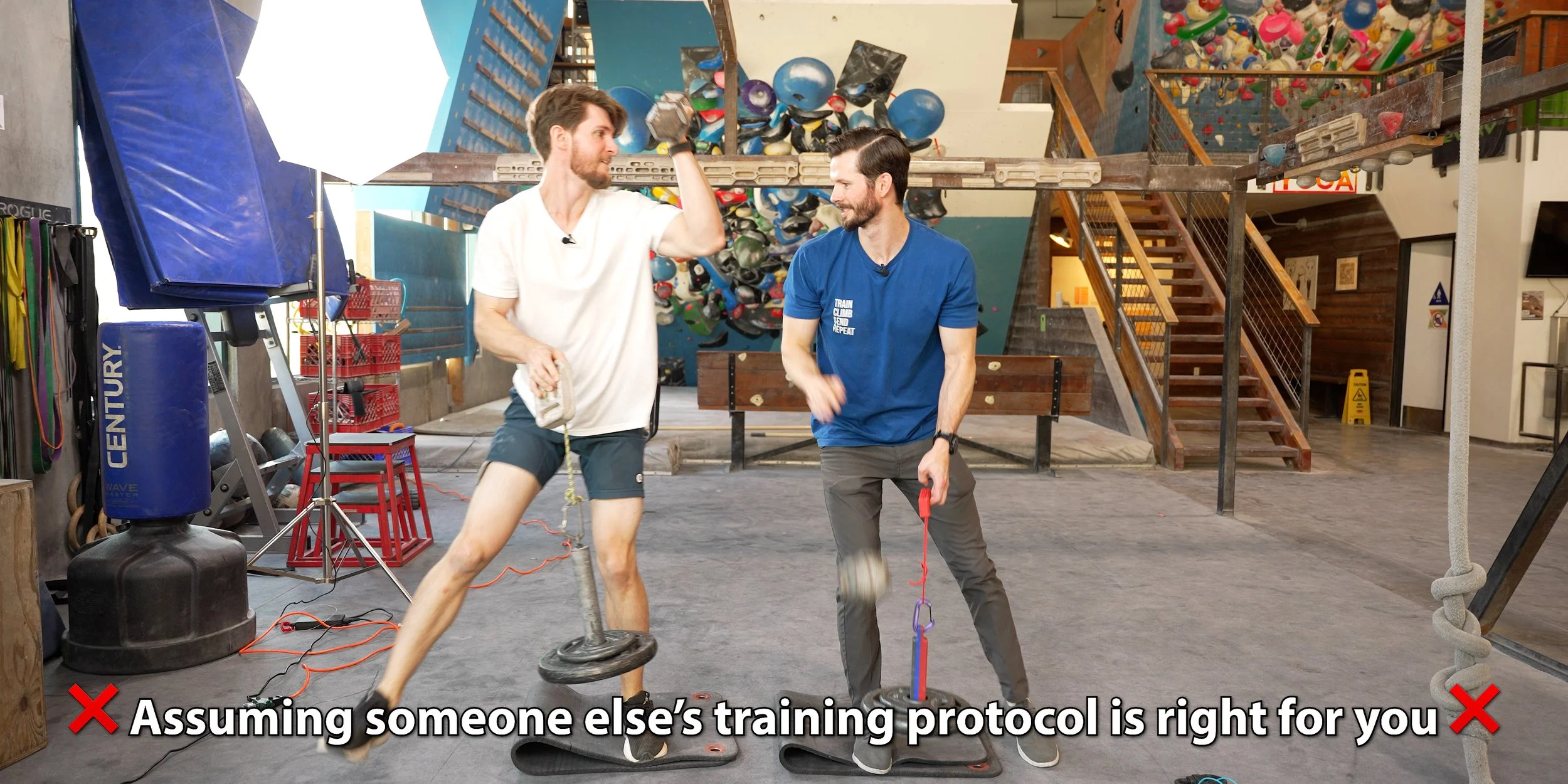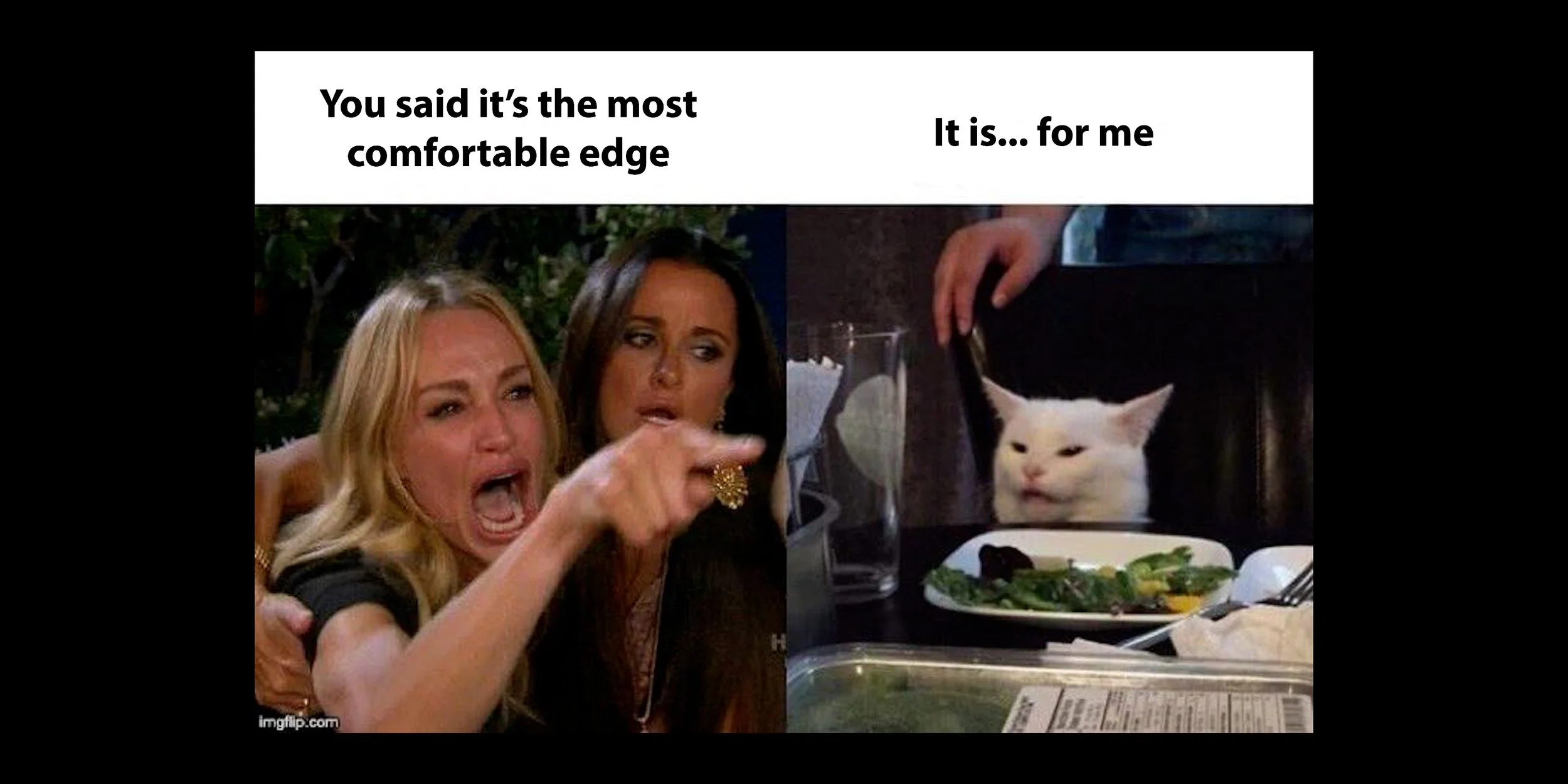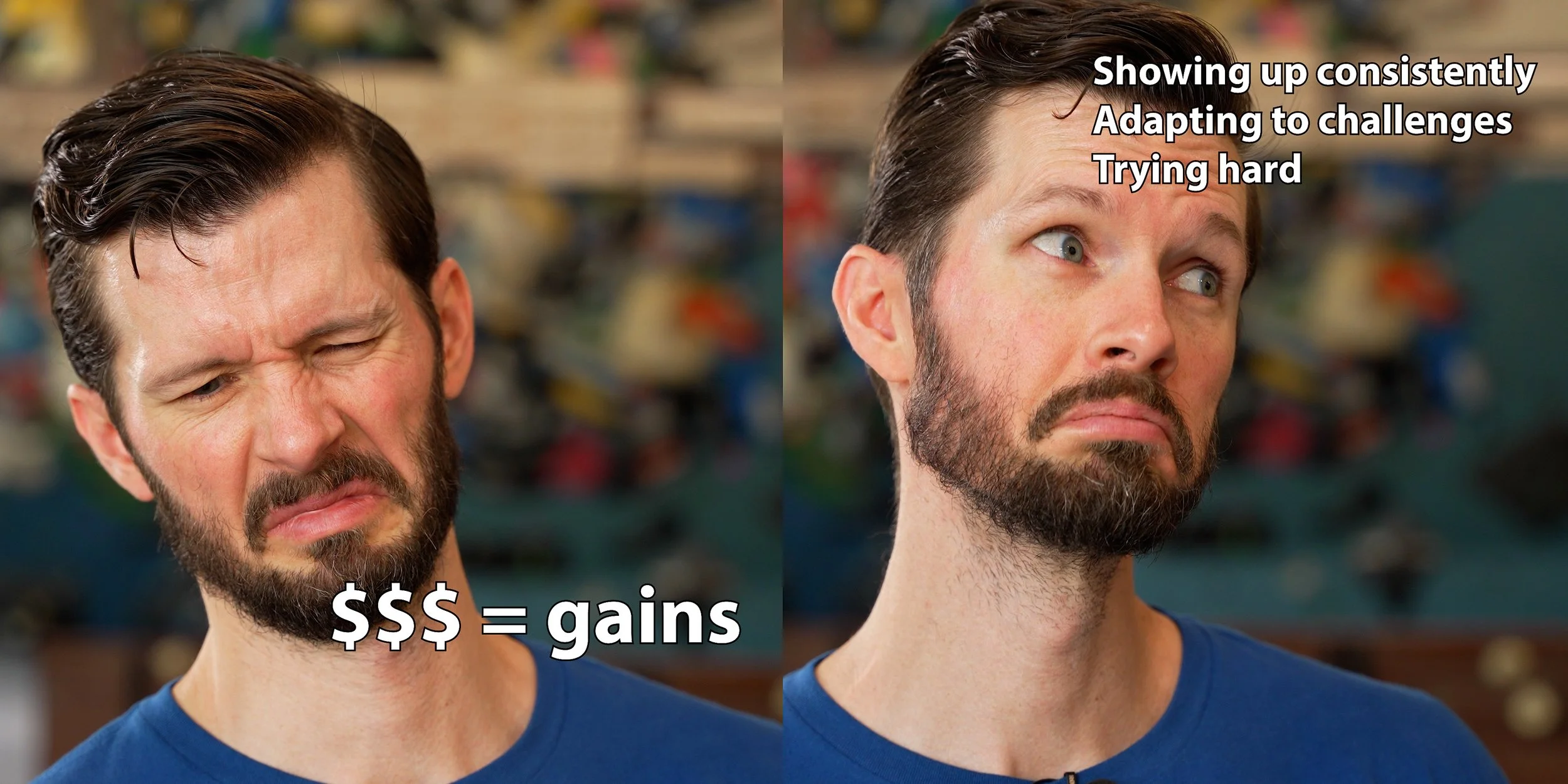180 Days Testing Changed Our Opinions on Finger Training Devices
Hooper’s Beta Ep. 161
Introduction
Emile and I have been testing over 30 different finger training devices for the past 6 months and it’s safe to say, we’ve learned some things.
Quite a few things that we think are worth telling you all about. Because some of them even led to us changing the devices we personally use.
So without further ado, here are the top five things we’ve learned so far. Shoutout to Realand for sponsoring this video! More on their awesome protein powder later in this video.
Ethics / Disclosure
This video is not intended as a review, recommendation, or denigration of any particular device. All devices were either already owned by us or were sent to us by the manufacturer for free with no strings attached. No money has changed hands and none of those companies are the sponsor of this video. One of the manufacturers, Frictitious, has been a sponsor on this channel in the past and we currently have an affiliate link for their products. Two of the devices in this video are made and sold by us at Hooper’s Beta. Regardless, we’ll do our best to provide fair and balanced information.
#5: Getting a Custom Made Edge Doesn’t Guarantee Comfort
Comfort is one of the most important factors, if not *the* most important, when assessing an edge for finger strength training. A lack of comfort will limit the amount of force you can generate, disincentivize you to train hard on a consistent basis, and maybe even be an injury risk.
To avoid that, many people turn to custom-made edges in the hopes of maximizing comfort and ergonomics. Typically, manufacturers will ask for a handful of measurements or some sort of reference for your finger size. Then, they’ll modify one of their templates to try to make the edge fit your particular morphology better.
Sometimes, it works well. Several of the edges we’ve been testing are custom-made, and we actually really like the feel of a few of them – there are no obvious pressure points or sharp corners, and everything lines up with our fingers quite nicely.
On the other hand, there are a few others that don’t seem to fit right. Whether it’s an issue with the width of the steps, the depth of the edge, or the curve of the edge profile, some custom edges are just straight up uncomfortable for us. For example, Emile’s pinkies are slightly crooked, but most of the custom edges unsurprisingly don’t currently seem to account for this, meaning the space for his 5th digits just don’t have enough clearance to slot in naturally.
But how could that be? If it’s custom, it should fit like a glove!
Unfortunately, it’s not so simple. We could make an entire video on this topic, but the short explanation is that making a “custom” edge is not an entirely objective process; it involves a slew of assumptions and subjective decisions by the manufacturer. And sometimes, like in Emile’s example, the manufacturers currently don’t (or can’t) consider an aspect of your individual anatomy! In other words, you can’t just take a few basic measurements, plug them into the computer, and magically churn out an objective representation of the “optimal edge for your anatomy.” After all, what is “optimal” for your fingers? What measurements are needed to obtain “optimal”? Can “optimal” even be quantified by simple external measurements?
Short answer: we don’t yet know. That’s not to say we can’t make some educated guesses, like placing all finger joints at the same angle so they share the load more evenly and hopefully avoid chronic overuse issues – but still, we don’t have robust, long-term data to support that hypothesis. At present, a custom edge is really just a manufacturer’s best guess at what will be best for you. It’s currently more art than science, and like all art, it won’t be to everyone’s taste.
Something that isn’t so subjective, though, is our next lesson.
#4: The Anchor System is Overlooked
The anchor system, or the part that allows you to connect the edge to some sort of weight, has historically been just a loop of rope on most devices. It’s a simple, mostly functional way to do it, but there are some nuances many devices miss that actually make a huge difference to how they function.
The placement of the rope in relation to the centerline of the edge affects how much the edge will pitch and roll under load. For example, if the rope is placed behind the centerline, it will pitch back when loaded, turning it into more of a sloper. If the rope is placed in front of the center of the edge, it will pitch forward and become more incut. Additionally, if the rope or carabiner can slide side-to-side, it can allow the device to roll to one side when you pick it up. While these can all be useful modifications in niche scenarios, for strength training you typically want the most stable, consistent surface you can get. Thus, an edge that’s never quite in the same position twice or worse, one that might move *during* a rep, is not ideal.
Some manufacturers have caught onto this and implemented wedges, slots, or additional friction into the design to try to lock the ropes into place. In our testing, some of these systems work fairly well, allowing you to mostly “set it and forget it.” Others, however, would often get out of adjustment for us between reps.
One simple solution to all of this is for the device to use an integrated eyelet rather than a rope. As long as the eyelet is positioned correctly, it eliminates the pitching and inconsistency and makes for a nice compact setup. While you lose some adjustability and thus versatility from the rope system, the improved consistency of the eyelet is a boon for max-weight testing and block pulls. Personally, I wish all devices would switch to eyelets, while Jason and Dan still prefer the versatility of rope for some scenarios.
Finally, a small but appreciated quality of life upgrade for any anchor system is a swivel mount. These allow you to swivel the edge into whatever orientation you need to pick up the weight, rather than having to shuffle around the loading pin until you’re lined up properly. This also makes switching hands on left-right devices much quicker.
Little upgrades like that go a long way, but that’s not always enough. Which is why the next lesson is…
#3: One Edge Will Never Do It All
Throughout our testing, I’ve been mainly focused on using the devices for warm ups and recruitment pulls / “overcoming isometrics” while Emile has focused on max-weight block pulls. This has made one thing quite apparent: different use-cases often call for different edges.
Some of the details that make a big difference for heavy block pulls, like a properly positioned anchor system and a large roundover for comfort, tend to be less crucial for a warm-up edge, where we’re also looking for portability and specificity. When we’re preparing to climb on some tiny crimps, a large block pull edge doesn’t quite do the trick for our connective tissue and skin. Meanwhile, for recruitment pulls, we much prefer an edge with some incut to dig behind.
To add to this, some companies are designing their holds to be used for one specific purpose, and it makes a difference! I tried performing block lifts (yielding isometrics) on an edge that was designed for recruitment pulls (overcoming isometrics) and it was quite uncomfortable! The edge dug into my skin and I couldn’t pull as hard. But when I switched it up and used the edge for its intended purpose, it felt quite nice. (duh!)
So, while you certainly don’t need a backpack full of edges to get the job done, it can definitely help to at least have a larger one for maximizing muscular strength adaptations and one or two smaller edges for getting acquainted with sub-20 mm crimping. I currently find different edges more comfortable for block pulls vs crimp curls vs warm ups and recruitment pulls. Different tools for different jobs.
Realand Ad
Just like how great tools are important for training but require good programming to be effective, great programming can fall flat without good nutrition. That’s why we are stoked that Realand is sponsoring this video and giving everyone 25% off their awesome protein powder with the code “hoopersbeta.”
Realand offers high-quality, sustainable protein products including grass-fed whey and plant-based options, each sourced ethically from progressive farms committed to environmental stewardship, emphasizing natural, simple ingredients with no artificial additives.
Now, I typically go with whey protein, but that’s because most vegan proteins I’ve tried are chalky, don’t blend well, and honestly just don’t taste great. Realand’s vegan protein, on the other hand, tastes fantastic, blends smoothly, and doesn’t leave that miserable chalky feeling in your mouth.
They also have an unflavored whey option, so you can add protein to just about anything without making it overly sweet and flavored. Protein pancakes? Protein cereal? Protein pumpkin pie? Protein mashed potatoes? Protein turkey!? Thanksgiving is gonna be so anabolic this year.
Realand Protein powders also go through rigorous testing to make sure what they say is on the label is what you are actually ingesting. So if you’re in the market for a high quality sustainable protein powder, check out Realand.
Oh and in case you already forgot: use code “hoopersbeta” at checkout for a whopping 25% off your entire order!
#2: One Person’s Favorite Can Be Your Nightmare
One of the biggest mistakes we all make is seeing something that works for someone else, like Adam Ondra training twice a day, and immediately assuming that that’s what we should be doing, too. Without opening a huge can of worms, suffice it to say that while there are a ton of valuable lessons us normies can learn from elite athletes, one of those lessons is *not* that we should directly copy their training routine. But, this doesn’t just apply to elite athletes.
Another thing we discovered throughout our testing is that individual preferences for finger training devices vary greatly, just like our finger morphology. Dan, for example, loves a nice flat edge – both for training and warming up. I, on the other hand, will probably never train block pulls with a flat edge again after trying out certain varying height (“unlevel”) edges. Even a few heavy reps on a flat edge will pinch and eventually tear the skin near my pinky’s DIP joint area. Something about my grip position or finger length makes it impossible to avoid on medium to large edges, but a total non-issue on certain varying height edges.
So, just because someone else says an edge is the most comfortable one they’ve ever used doesn’t mean that you’ll have the same experience. In fact, you could even feel the exact opposite. All the more reason to try out as many as you can and see for yourself.
Of course, don’t let trying out different edges distract you from the last, most important lesson.
#1: Good Tools Are Essential, but They’re Not Enough
A world-class runner can beat just about anyone in the most basic shoes. Hell, they can beat most people barefoot! But with the best possible shoes, they can also go a whole lot faster. Was it shoes that took them from average to world-class? Of course not! It took a ton of consistent hard work to build elite strength, endurance, and technique. Good shoes, or any good tool for that matter, just make that process easier and more enjoyable.
Ultimately, the most important takeaway from our testing so far is that having the most comfortable, most ergonomic, most high-tech, most heavily-marketed edge is not going to get you strong fingers. The only way to accomplish that is the same way the runner got good: diligence, adaptability, and effort. If you’re worried you’re going to fall behind because you don’t have the latest and greatest device, rest assured: You *do* need functional tools to get you where you want to go, but there is currently no compelling dataset to tell us that certain edge types will get you better long-term results than another. Anyone who says otherwise is just guessing.
Of course we’d love it if you bought a brand new ModEdge from our store, but I’m not going to sit here and tell you it’s the only way for you to get strong, healthy fingers. At present, the most plausible early indicator that an edge will work well for someone is that it feels comfortable.
Conclusion
Don’t forget to use our code for some smoooooth protein powder from Realand, check out that ModEdge if you want to get your hands on our brand new user-adjustable edge, and until next time: train, climb, send, repeat!
DISCLAIMER
The Beta Agency is providing content on its website that aims to inform rock climbing enthusiasts and/or individuals interested in the field of physical therapy of the various physical conditions that may befall those engaged in the sport of rock climbing, for informational purposes only. None of the information provided by The Beta Agency should be regarded as medical advice or construed to be a medical diagnosis of any form. By using our products, services, and/or the information on our website, you acknowledge that you understand this information is not meant to be a substitute for medical advice from an appropriate licensed healthcare professional, and that you will not rely on any of the information you acquire from us as the sole basis, personally or as a suggestion to others, to make any healthcare-related decision(s). If you suspect that you may have a medical condition that you are trying to diagnose, we strongly urge you to seek the advice of an appropriate medical practitioner. If you have a medical emergency, you should contact emergency services immediately.
Click for full Terms and Conditions and Privacy Policy
